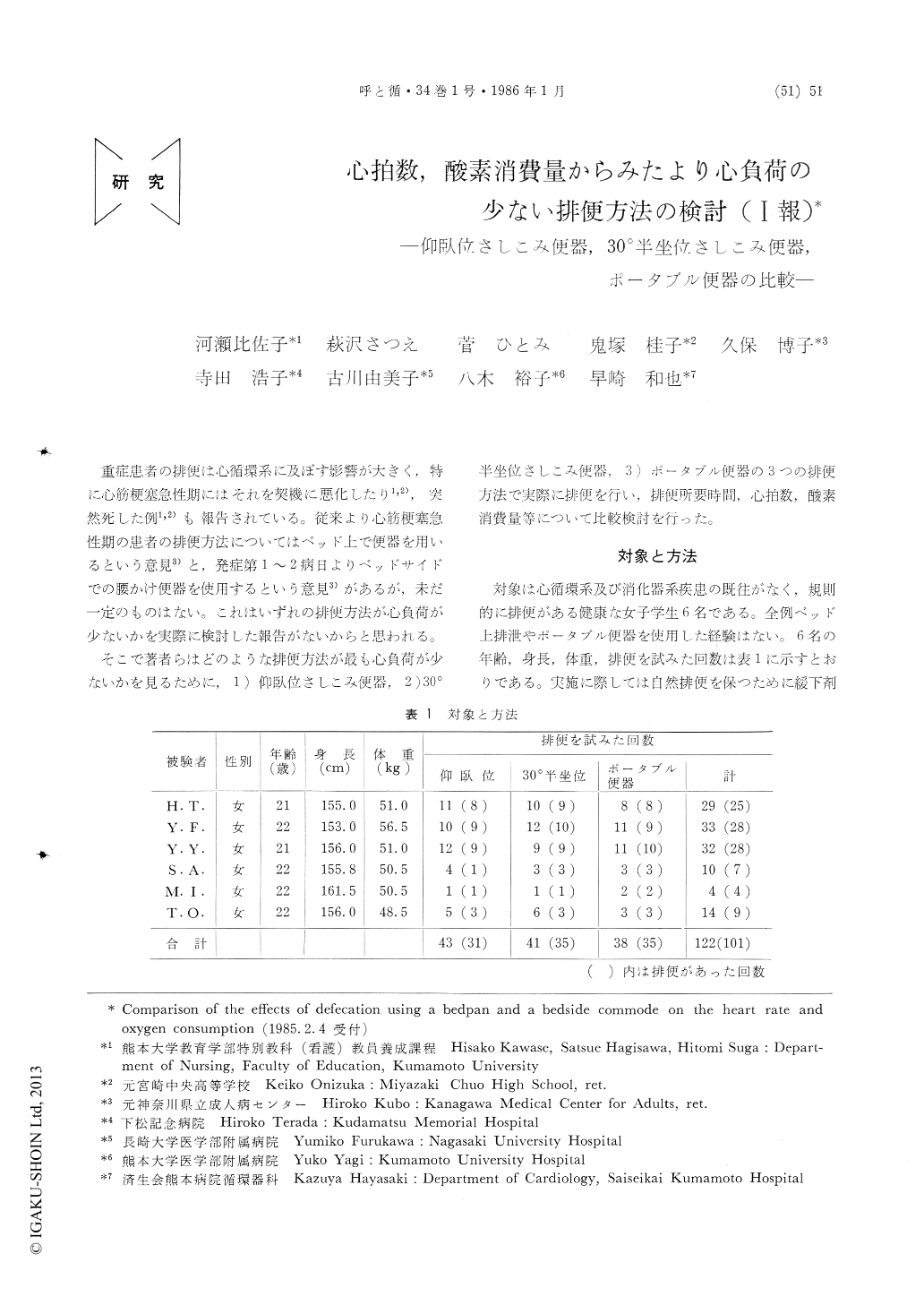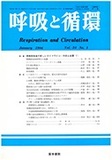Japanese
English
- 有料閲覧
- Abstract 文献概要
- 1ページ目 Look Inside
- サイト内被引用 Cited by
重症患者の排便は心循環系に及ぼす影響が大きく,特に心筋梗塞急性期にはそれを契機に悪化したり1,2),突然死した例1,2)も報告されている。従来より心筋硬塞急性期の患者の排便方法についてはベッド上で便器を用いるという意見3)と,発症第1〜2病日よりベッドサイドでの腰かけ便器を使用するという意見3)があるが,未だ一定のものはない。これはいずれの排便方法が心負荷が少ないかを実際に検討した報告がないからと思われる。
そこで著者らはどのような排便方法が最も心負荷が少ないかを見るために,1)仰臥位さしこみ便器,2)30°半坐位さしこみ便器,3)ポータブル便器の3つの排便方法で実際に排便を行い,排便所要時間,心拍数,酸素消費量等について比較検討を行った。
In the attempt to determine the least taxing of the methods of defecation using a bedpan in a supine, a bedpan in a 30° semirecumbent position and a bedside commode for the heart rate and oxygen consumption in 6 normal volunteers, we found the following: 1. The heart rate increased in actions before and after defecation in the same manner as in actions during defecation with either of the 3 meth-ods.
2. Cardiac stress due to actions before and after defecation was small with the use of a bedpan, but the duration of defecation was longer; associat-ed with more frequent straining efforts.
3. With the use of a bedpan in a 30° semire-cumbent position, cardiac stress, the duration of defecation and the frequency of straining efforts were the same as those with the use of a bedpan in a supine position. The method of using a bedpan in a 30° semirecumbent position does not seem advantageous over the method of using a bedpan in a supine position.
4. With the use of a bedside commode, cardiac stress was small during defecation, but oxygen con-sumption for pre- and post defecation's actions was larger than it with the use of a bedpan.
5. Metabolic equivalents (METS) during defeca-tion with either of the three methods was 2.0 or less and lower than literature data.

Copyright © 1986, Igaku-Shoin Ltd. All rights reserved.


